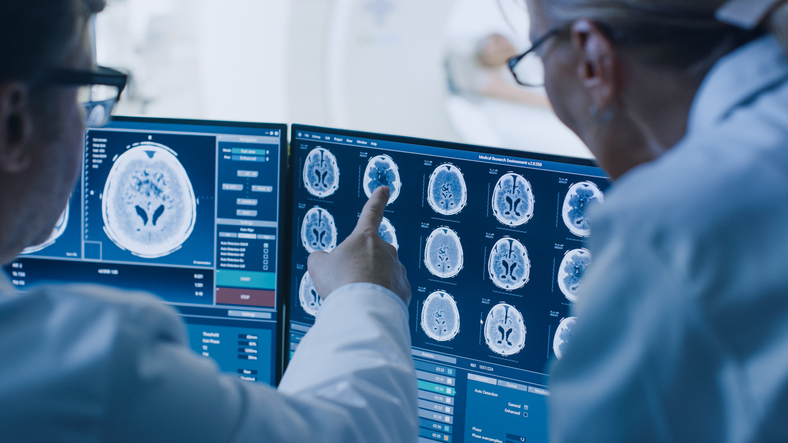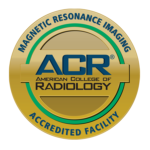Magnetic resonance imaging (MRI) is a valuable tool that medical providers rely on. An advanced medical imaging technique, an MRI allows our radiologists to provide your healthcare provider with a detailed look at what is going on inside the body, aiding in diagnosis and guiding treatment for a variety of potentially serious medical conditions. Intermountain Medical Imaging is a leading provider of MRIs in the Boise, Meridian, and Eagle area. The following explains what happens during the procedure and what you can expect during your visit.
How Magnetic Resonance Imaging (MRI) Works
An MRI may be ordered by your provider to aid in the diagnosis and treatment of a variety of serious injuries, illnesses, and chronic health conditions. MRI machines are large, tube-shaped magnets.[1] Patients lie on a table, which is then slowly and gently inserted into the machine. During your MRI, the following occurs:
- A magnetic field is created by the MRI machine, which temporarily interacts with the body’s natural magnetic properties (the hydrogen atom within the body’s tissue).
- As these water molecules realign, radio waves are then emitted by the machine, which creates faint signals.
- These signals are picked up by a nearby computer and monitor.
- The computer then translates these radio wave signals to create cross-sectional images of the body parts or systems being examined.
A common comparison used to explain the MRI process involves viewing the human body as a loaf of bread. The MRI process allows our radiologists to obtain a view of what is going on inside the body via images that can be compared to individual ‘slices.’ Our radiologists then interpret the detailed, highly-accurate 2-D and 3-D images for your provider.
In some cases, a contrast dye may be used during an MRI to obtain even more detailed images. This can help in illuminating body parts and how specific body processes are working. Regardless of whether or not dye is used, MRI remains one of the most common and pain-free forms of diagnostic testing, and the process is used on millions of patients each year.
Why Your Doctor May Have Ordered an MRI
MRIs at Intermountain Medical Imaging are performed regularly, with MRI being one of the preferred methods of testing among medical providers. Unlike traditional x-rays or other diagnostic tools, such as computed tomography (CT) scans, an MRI does not expose the patient to radiation. Common types of medical conditions for which your doctor may request an MRI for diagnostic or treatment purposes include:
- Abdominal and digestive tract problems;
- Alzheimer’s disease, dementia, tumors, and other types of brain disorders;
- Back and neck issues, such as those impacting discs or vertebrae;
- Brain injuries resulting from accidents, stroke, hemmorrhage, or concussion;
- Congenital heart defects and heart disease;
- Examination of bones, joints, and soft tissues such as cartilage, muscles, and tendons for musculoskeletal injury or abnormalities.
- Neurological deficits of the central and peripheral nervous system;
- Precancerous and cancerous conditions throughout the body;
- Presurgical planning thoughout the body;
- Pelvic concerns in women and prostate issues in men;
- Spinal cord injuries and conditions impacting the discs;
- Soft tissue injuries;
- Vascular system and evaluation of the veins and arteries;
- Vision disturbances and other sensory impairments or disorders.
What to Expect During Your MRI
Prior to your appointment at Intermountain Medical Imaging, you will be provided with a patient guide explaining the MRI procedure. On the day of your appointment, you will be instructed to wear loose, comfortable clothing and to leave all jewelry, hair clips, or other metal objects at home. Other than this, there are no additional preparations that are needed.
When you arrive at IMI, you will be warmly greeted by our staff and taken to a private room, where we will collect additional intake information. The radiology technologist conducting the MRI will also meet with you, briefly explaining the procedure and answering any last-minute questions you may have.
During your MRI exam[2], you will be instructed to lie still on a flat table, which is then moved into the round opening of the MRI machine. In the past, some MRI patients experienced a sense of uneasiness being confined in this space. However, improvements over the years have made MRI machines larger, helping to eliminate any claustrophobia patients might experience.
The procedure itself may take anywhere from 15 minutes to an hour. After your MRI, you may resume all of your normal activities. Your provider will receive a copy of your imaging results and will contact you to review the results with you.
Contact Our Office Today
For more than 20 years, Intermountain Medical Imaging has been a trusted provider of MRI services in Boise, Meridian, and Eagle. For answers to additional questions about what happens during an MRI or to request a price quote, contact our offices today.
[1] https://www.nibib.nih.gov/science-education/science-topics/magnetic-resonance-imaging-mri
[2] https://www.mayoclinic.org/tests-procedures/mri/about/pac-20384768


